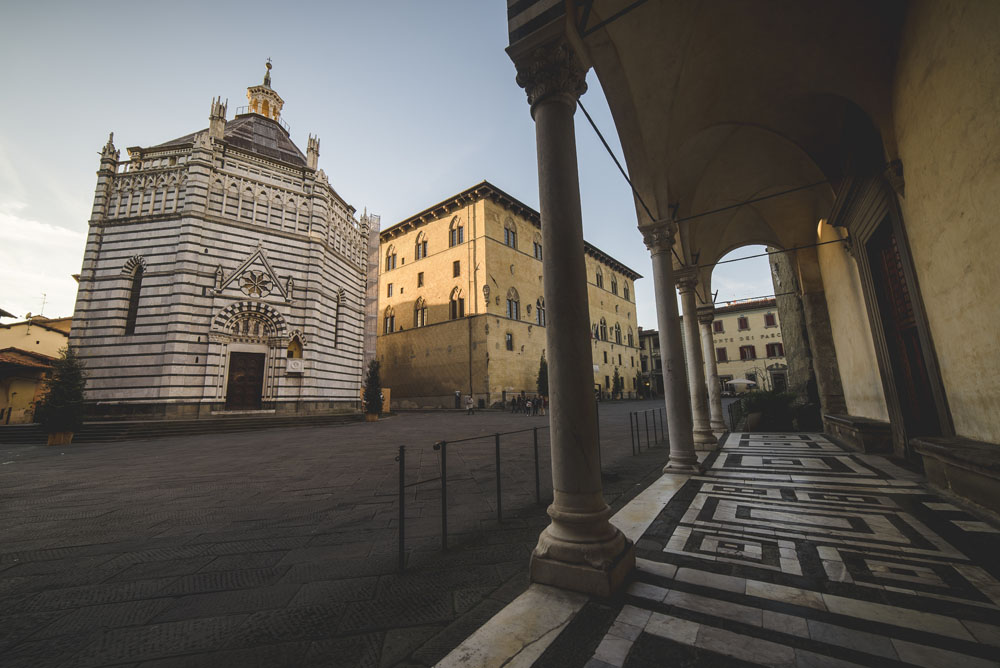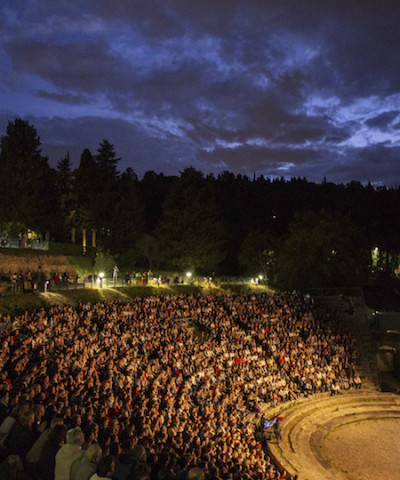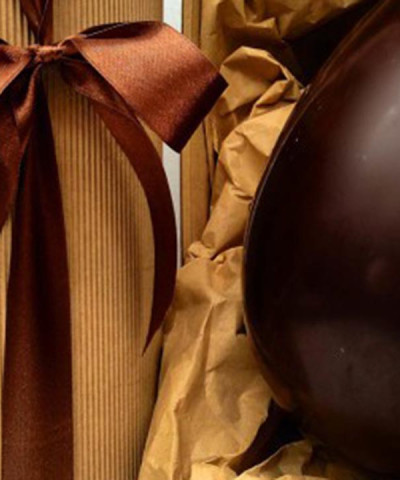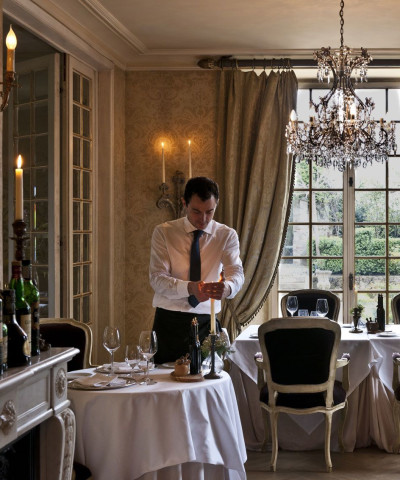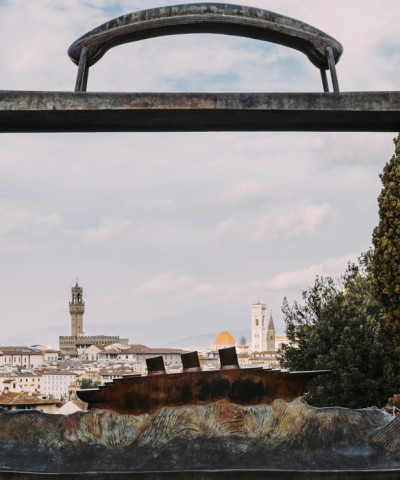Pistoia heart of Italy
The 2017 capital of culture, rich in monuments and tradition
Every year an Italian city is designated as “capital of culture”, which means that for twelve months that city will host a number of events, conferences, concerts, exhibitions and its known and lesser-known treasures will be in the spotlight. 2017 is the year of Pistoia, after Mantova in 2016, and this Tuscan city is ready to show the world all that it has to offer.
White and green marble
These are the colors typical of the Romanesque style in Tuscany and the heart of Pistoia is full of it, starting with the Cathedral dedicated to Saint Zeno, the bishop. The church safeguards the silver Altarpiece of St. James, the patron saint of Pistoia, a masterpiece of the goldsmith’s art begun in the late 13th century and finished two centuries later. Its other highlight is the Crucifix by Coppo di Marcovaldo. Across the square from the Cathedral, just like in Florence, is the octagonal-shaped Baptistery of San Giovanni in Corte. A marble font enlivens the otherwise bare interior. Piazza del Duomo is also home to the Palazzo Pretorio with its frescoed rooms and walls covered with coats of arms that portray the city’s political history.
Not far from there is the Church of Sant’Andrea, which contains a masterpiece of Gothic art, the magnificent white marble pulpit carved by Giovanni Pisano. Pistoia’s long list of sights includes the Basilica of Madonna dell’Umiltà (its dome was designed by Vasari) and the beautiful Church of San Giovanni Fuor Civitas, which was once located outside of the city walls and is now in the old town center. The Ospedale del Ceppo is a former hospital whose recently-renovated facade stuns with a polychrome terracotta frieze by Santi Buglioni. The building houses one of Italy’s richest medical museums and a small but perfect anatomical theatre. Pistoia is also guardian to some striking contemporary art: Palazzo Fabroni, host to temporary exhibitions and a permanent collection of twentieth-century art, and the Marino Marini Museum, inside Palazzo del Tau, devoted to the works by the city’s most famous modern son, from his grand equestrian statues to the female nudes evoking the Etruscan goddess Pomona.
A year of events
In keeping with its sobriety of style, Pistoia will be hosting a number of events that will bring visibility to the whole city over the long term, starting with the renovation of the thirteenth-century Ospedale del Ceppo, whose haemodialysis pavilion has been re-designed by architect Giannantonio Vannetti, while an international conference will be dedicated to Giovanni Michelucci, one of the greatest Italian architects of the twentieth century. Giovanni Michelucci will be also celebrated with an exhibition held at Palazzo Comunale, from March 25 to May 21. The Civic Museum will be hosting, from October 28 to January 7, 2018, an event revolving around The Presentation of Jesus at the Temple by the eighteenth-century Florentine painter Anton Domenico Gabbiani. Showing at Palazzo Fabroni is the exhibition Marino Marini. Visual Passions, from September 16 to January 7, 2018. John Mayall, one of the European “fathers” of the Pistoia Blues Festival, held between June and July, will be performing at the Manzoni Theatre on February 23. Mozart fans will have the chance to see the Idomeneo opera staged at the Manzoni Theatre, as one of the events of the Maggio Musicale Fiorentino Festival, between April and May. The Maggio Musicale Fiorentino Orchestra and Chorus will perform in Piazza del Duomo on July 5.
Dining options
The city will surely live up to its culinary reputation. The lovely and picturesque Piazza della Sala (where during the day you will find open-air stalls heaped with seasonal fruit and vegetables) is lined with deli-restaurants, such as I sapori della BotteGaia, on via di Stracceria 4 and Gastronomia Salaioli overlooking Piazza della Sala at number 19, which are famed for their cured meat, cheese, focaccia bread, truffle and fragrant coffees. If you would rather dine at the foot of the Baptistery, book a table at La BotteGaia on Via del Lastrone, which offers an extensive wine list and traditional dishes prepared with innovative cooking techniques. The Sq’amami restaurant, on Via dei Panciatichi 4, offers a rich menu of fresh fish-based dishes.
If it’s pizza you’re looking for, there is only one place you should go to: La Sala da Ale, on Via Sant’Anastasio 4, with over 80 kinds of pizza to choose from. Locanda del Capitano del Popolo on Via di Stracceria 5/7 is known for its genuine Tuscan cuisine and its owner, Checco, whose family has been in the restaurant business since 1890. For more contemporary-oriented cuisine, go to Voronoi, on Piazza dell’Ortaggio 14/17, which runs both bar with a rich cocktail list and restaurant.
Every year an Italian city is designated as “capital of culture”, which means that for twelve months that city will host a number of events, conferences, concerts, exhibitions and its known and lesser-known treasures will be in the spotlight. 2017 is the year of Pistoia, after Mantova in 2016, and this Tuscan city is ready to show the world all that it has to offer.
White and green marble
These are the colors typical of the Romanesque style in Tuscany and the heart of Pistoia is full of it, starting with the Cathedral dedicated to Saint Zeno, the bishop. The church safeguards the silver Altarpiece of St. James, the patron saint of Pistoia, a masterpiece of the goldsmith’s art begun in the late 13th century and finished two centuries later. Its other highlight is the Crucifix by Coppo di Marcovaldo. Across the square from the Cathedral, just like in Florence, is the octagonal-shaped Baptistery of San Giovanni in Corte. A marble font enlivens the otherwise bare interior. Piazza del Duomo is also home to the Palazzo Pretorio with its frescoed rooms and walls covered with coats of arms that portray the city’s political history.
Not far from there is the Church of Sant’Andrea, which contains a masterpiece of Gothic art, the magnificent white marble pulpit carved by Giovanni Pisano. Pistoia’s long list of sights includes the Basilica of Madonna dell’Umiltà (its dome was designed by Vasari) and the beautiful Church of San Giovanni Fuor Civitas, which was once located outside of the city walls and is now in the old town center. The Ospedale del Ceppo is a former hospital whose recently-renovated facade stuns with a polychrome terracotta frieze by Santi Buglioni. The building houses one of Italy’s richest medical museums and a small but perfect anatomical theatre. Pistoia is also guardian to some striking contemporary art: Palazzo Fabroni, host to temporary exhibitions and a permanent collection of twentieth-century art, and the Marino Marini Museum, inside Palazzo del Tau, devoted to the works by the city’s most famous modern son, from his grand equestrian statues to the female nudes evoking the Etruscan goddess Pomona.
A year of events
In keeping with its sobriety of style, Pistoia will be hosting a number of events that will bring visibility to the whole city over the long term, starting with the renovation of the thirteenth-century Ospedale del Ceppo, whose haemodialysis pavilion has been re-designed by architect Giannantonio Vannetti, while an international conference will be dedicated to Giovanni Michelucci, one of the greatest Italian architects of the twentieth century. Giovanni Michelucci will be also celebrated with an exhibition held at Palazzo Comunale, from March 25 to May 21. The Civic Museum will be hosting, from October 28 to January 7, 2018, an event revolving around The Presentation of Jesus at the Temple by the eighteenth-century Florentine painter Anton Domenico Gabbiani. Showing at Palazzo Fabroni is the exhibition Marino Marini. Visual Passions, from September 16 to January 7, 2018. John Mayall, one of the European “fathers” of the Pistoia Blues Festival, held between June and July, will be performing at the Manzoni Theatre on February 23. Mozart fans will have the chance to see the Idomeneo opera staged at the Manzoni Theatre, as one of the events of the Maggio Musicale Fiorentino Festival, between April and May. The Maggio Musicale Fiorentino Orchestra and Chorus will perform in Piazza del Duomo on July 5.
Dining options
The city will surely live up to its culinary reputation. The lovely and picturesque Piazza della Sala (where during the day you will find open-air stalls heaped with seasonal fruit and vegetables) is lined with deli-restaurants, such as I sapori della BotteGaia, on via di Stracceria 4 and Gastronomia Salaioli overlooking Piazza della Sala at number 19, which are famed for their cured meat, cheese, focaccia bread, truffle and fragrant coffees. If you would rather dine at the foot of the Baptistery, book a table at La BotteGaia on Via del Lastrone, which offers an extensive wine list and traditional dishes prepared with innovative cooking techniques. The Sq’amami restaurant, on Via dei Panciatichi 4, offers a rich menu of fresh fish-based dishes.
If it’s pizza you’re looking for, there is only one place you should go to: La Sala da Ale, on Via Sant’Anastasio 4, with over 80 kinds of pizza to choose from. Locanda del Capitano del Popolo on Via di Stracceria 5/7 is known for its genuine Tuscan cuisine and its owner, Checco, whose family has been in the restaurant business since 1890. For more contemporary-oriented cuisine, go to Voronoi, on Piazza dell’Ortaggio 14/17, which runs both bar with a rich cocktail list and restaurant.






